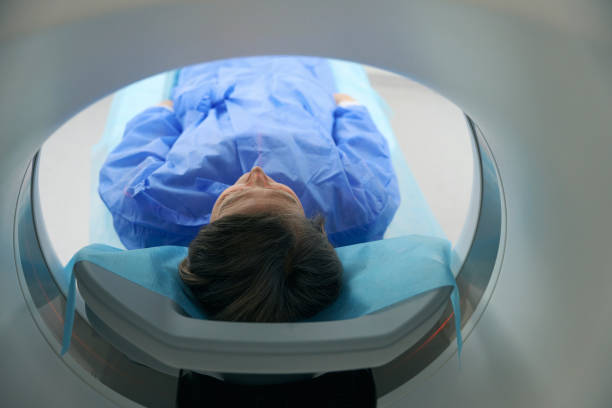
When undergoing a CT (Computed Tomography) scan, a contrast dye (also known as a contrast agent) is often used to enhance the images, helping doctors detect and assess conditions such as tumors, infections, and blood vessel abnormalities. This contrast dye, typically containing iodine, is injected into the bloodstream, swallowed, or administered through a catheter, depending on the examined area.
After the scan, many people wonder how to flush out CT scan dye from their bodies. While the dye is generally not harmful and is gradually eliminated through the kidneys and excreted via urine, there are several ways to support this natural process and help your body clear the dye more efficiently. In this guide, we’ll explore the steps you can take to flush out CT scan dye safely and effectively.
1. Drink Plenty of Water
Staying well-hydrated is the most effective way to flush out the CT scan dye. Water helps to flush out toxins and contrast agents through your kidneys. After your scan, drinking extra fluids is recommended to encourage urination, which will help eliminate the dye more quickly.
-
How much water should you drink? Aim for at least 8-10 glasses (around 2-2.5 liters) of water daily, depending on your body size and activity level if you can, try to increase this intake for the first 24-48 hours after your CT scan.
-
What types of fluids are best? Water is the most effective option, but you can also consume herbal teas, clear broths, or fruit juices (without added sugar). Avoid alcohol and caffeinated drinks, as they can lead to dehydration, which could slow the elimination process.
2. Follow Your Doctor’s Post-Scan Instructions
Your doctor may provide specific advice tailored to your health and the type of contrast dye used. Some people with certain health conditions, such as kidney problems, may be instructed to take extra steps or follow a specific hydration regimen to help flush the dye out. Always follow the post-scan guidelines given to you by your healthcare provider.
3. Eat a Healthy Diet High in Fiber
A fiber-rich diet can help your body process and excrete waste, potentially assisting in flushing out the contrast dye. Fiber helps to move things through your digestive system more efficiently, promoting regular bowel movements.
- Foods to include: Whole grains, fruits, vegetables, legumes, and nuts are all excellent sources of fiber. These foods not only aid digestion but also help maintain overall health.
4. Exercise Regularly
Physical activity can stimulate the kidneys and other systems in the body to function more efficiently, helping to eliminate the contrast dye through sweat and urine. Regular movements, such as walking, light jogging, or yoga, can promote kidney function and circulation.
- Moderate activity: You don’t have to engage in intense workouts, but aim for at least 30 minutes of moderate exercise daily. This can encourage fluid flow through your body and speed up the natural detoxification process.
5. Urinate Frequently
Frequent urination is key to flushing out the dye. Drinking water and staying hydrated will naturally produce more urine. The contrast dye is typically filtered by the kidneys and excreted in the urine, so it’s crucial to keep the urinary system active by urinating often.
- Why does this matter? The dye is primarily eliminated through your kidneys, so urinating often ensures the contrast agent is removed efficiently. This is why drinking water and staying hydrated is so important after the procedure.
6. Monitor for Side Effects
While most people don’t experience long-term effects from CT scan dyes, some individuals may have mild reactions such as:
- Nausea
- A metallic taste in the mouth
- Mild skin rash
- Dizziness or a feeling of warmth
Contact your healthcare provider immediately if you experience any severe or unusual reactions, such as shortness of breath, swelling, or an itchy rash. In rare cases, some people may experience an allergic reaction to the dye, which could require prompt medical attention.
7. Use Diuretics (With Caution)
Diuretics are medications that can help your body expel excess fluids, encouraging more frequent urination. However, they should only be used under the supervision of a healthcare provider. Sometimes, a doctor might recommend a diuretic to help flush out the contrast dye if you are at risk of kidney issues or have trouble excreting the dye naturally.
8. Be Mindful of Kidney Function
People with pre-existing kidney issues may need to take additional steps to help eliminate the contrast dye. The kidneys filter out the contrast agent from your bloodstream, so individuals with compromised kidney function may have a harder time removing the dye.
- Kidney-friendly tips: Besides drinking extra water, avoiding high-protein diets, staying hydrated, and monitoring kidney function closely with the help of a healthcare professional are vital steps.
9. Rest and Recover
While drinking fluids, eating fiber, and exercising can aid the removal of the dye, it’s also important to allow your body to recover naturally. Resting and ensuring you’re not overstressed helps your body maintain its natural detoxification processes.
Conclusion
Flushing out CT scan dye is mostly a natural process, but there are steps you can take to help your body efficiently remove the contrast agent. Drinking plenty of water, eating a fiber-rich diet, exercising, and staying mindful of your kidney function are the best ways to ensure that the dye is cleared from your system in a timely manner.






Leave a Reply